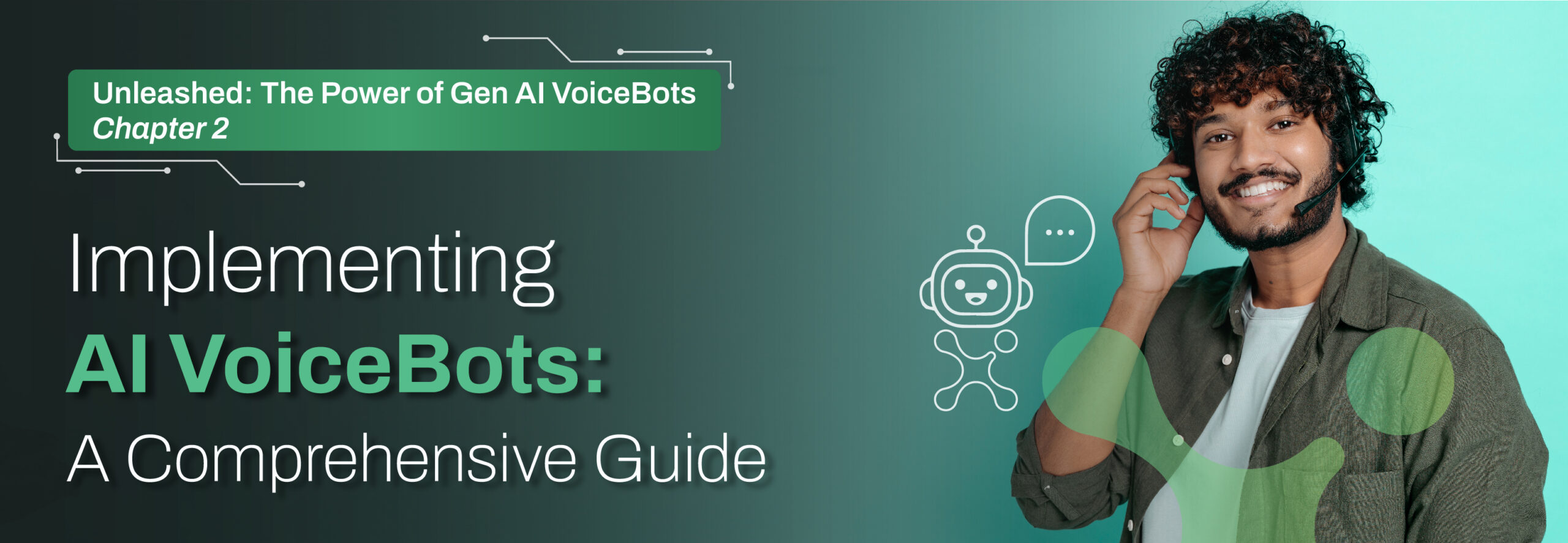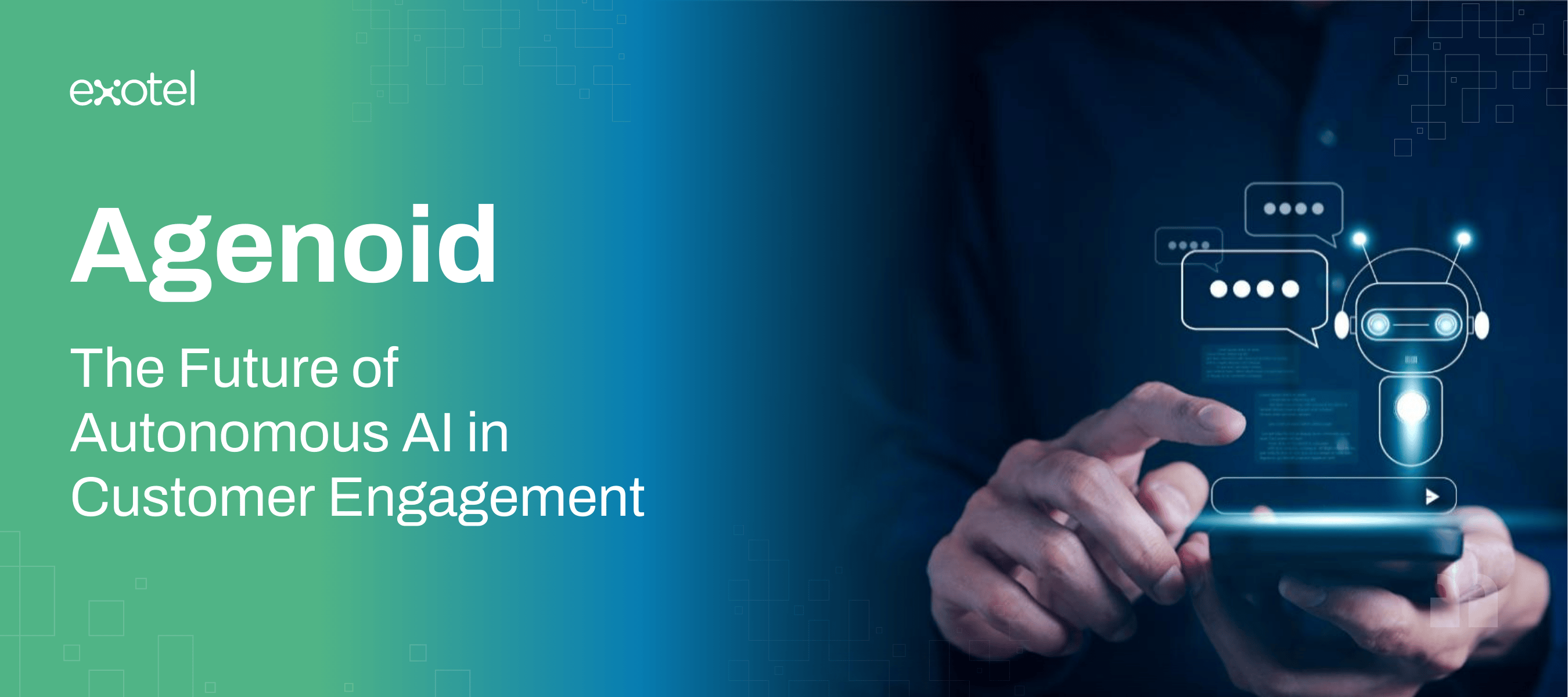You want to deliver stellar support, but being available 24×7 is challenging. Thankfully, AI voicebots can help. They can provide consistent, human-like engagement around the clock without any additional human agents.
In this blog post, we explore how AI voicebots work and solve real-life business problems.
What is an AI Voicebot?
It is a software that mimics human conversations and talks to customers like a real agent. It uses technologies like voice recognition, natural language processing, and speech synthesis to understand conversations and produce responses.
They can be used to provide 24×7 customer service, answer FAQs, schedule appointments, trigger reminders, process orders, and collect feedback.
Types of AI Voicebots
There are five types of voicebots based on their functionality and technology. Here’s an overview of each type:
| Type of AI Voicebot | How it works? | Capabilities | Examples |
| AI-powered voicebots | Uses machine learning to gradually improve responses |
|
FAQ bots |
| Conversational AI voicebots | Uses NLP and ML to stimulate human-like conversations |
|
Siri, Alexa, Google Assistant |
| Voice-activated bots | Performs tasks when triggered by voice commands |
|
Amazon Echo |
| GenAI Voicebot | Uses generative AI to personalize interactions |
|
Advanced customer support, virtual assistants |
1. AI-powered Voicebots
These bots use natural language processing (NLP) and machine learning (ML) to understand and respond to users in real time. It can understand the intent behind user queries, even when phrased in complex ways.
The bot continuously adapts to the conversation and learns new rules to interpret the speaker’s intent before responding. They often integrate with sentiment analysis to tailor responses based on user behavior.
2. Conversational Voicebots
These are advanced AI tools specifically designed to engage users with human-like conversations. While they also use AI, the primary focus is to respond to users in human language.
It can understand colloquial language, accents, and speech patterns and is programmed to offer a logical dialogue. The tool may not always adapt or improve over time unless integrated with ML functionalities.
3. Voice-activated Bot
These voicebots perform tasks when activated through voice commands. For example, when you ask Siri about the weather, it responds to you in real time. They can perform tasks such as setting reminders or answering practical questions.
4. Gen AI-powered Voicebots
These voicebots use advanced AI models like large language models (LLM) to engage with users in human-like, context-aware, and dynamic conversation. They can retain context, understand nuances, and decode intent to help users in any unique scenario. For example, Exotel’s GenAI voicebot uses advanced AI models to deliver humanized and context-aware conversation to assist customers in unique scenarios.
The tool generates natural human speech, including humor, empathy, or cultural references, and seamlessly handles multiple languages.
How Does AI-Powered Voicebot Work?
Step 1: Voice Transcription
The voicebot captures the audio input, processes it, and transcribes it using automatic speech recognition (ASR). The ASR technology uses deep learning models to convert the voice data into text.
Step 2: Speech & Context Analysis
The transcribed text data is interpreted using NLP to extract keywords, themes, and context to understand the caller’s intent.
This helps the AI Voicebot formulate appropriate contextual responses.
Step 3: Backend Logic
The bot uses a dialog management system to generate the best course of action — answering a question, performing a task, or asking a follow-up question.
Step 4: Speech Generation
The generated response is converted into speech using a TTS engine. The TTS technology ensures the speech sounds natural and engaging, making it a human-like interaction.
In most cases, all these steps are performed actively to offer a human-like conversational experience to the end-users.
Exotel’s GenAI voicebot ensures fluid, intelligent conversations that resonate with your customers. Request a demo today to redefine customer engagement.
Key Components of an AI Voicebot
- Automatic Speech Recognition (ASR) – It converts spoken words into text that the AI voicebot can understand and process in real time. The feature helps the bot accurately interpret diverse accents and speech patterns.
- Natural Language Understanding (NLU) – It recognizes the intent behind the query, contextual nuances and keywords within the conversation. This helps the bot provide accurate and meaningful responses, replicating a human-like conversational experience.
- Text to Speech (TTS) Engine – It converts text-based responses into spoken words, allowing voicebots to mirror speech cadences, tones, and pitches. It creates a smooth, natural conversational flow to foster user trust and engagement.
Benefits of AI Voicebots
For most people, voice (call) is the fastest and most natural way to engage with a business since it offers instant communication.
Here are the key benefits of implementing a voicebot in your business operations:
» 24×7 Availability
Voicebots can operate 24×7 and offer personalized attention to each customer without requiring any time off. It can always assist customers, ensuring your business remains accessible and responsive.
» Reduced Wait-Times
Voicebots can address a customer query quickly and resolve issues automatically at any time of the day. Callers can instantly resolve their issues independently instead of waiting for an agent.
» Improved Customer Experience
Easy access, immediate response, no wait time, and consistent services allow you to optimize customer satisfaction with AI voicebot. It can also personalize the conversation and interact with callers in natural language, improving convenience and overall customer satisfaction.
» Enhanced Operations
Voicebots can seamlessly scale up or down based on fluctuating demands, making it a flexible and adaptable solution for businesses experiencing seasonal and unpredictable changes in call volume.
By adopting voice AI, you can deliver uninterrupted customer support anytime while keeping up with the growing demand for quick solutions during peak hours.
Use Cases of AI Voicebots Across Industries
Here’s how different industries use AI voicebots to enhance customer interactions and streamline operations:
» Banking & Financial Services
The tool offers real-time support, enhances security, and delivers personalized customer experience in the financial sector. Here are some use cases:
- Balance Inquiries: Users can check their balances and transaction histories without contacting the human agent
- Fraud Alert: The bots can notify customers instantly about any suspicious activity and help them freeze the account in emergencies
- Loan Applications: AI voicebots can automatically pre-screen the customer for eligibility and update the application status
» Healthcare
AI voicebots can help enhance patient engagement and streamline administrative tasks, like:
- Appointment Scheduling: Patients can book, modify, or cancel appointments without talking to a receptionist
- Patient Follow-ups: The voicebots can make automated calls to schedule patient appointments for follow-ups
- Symptom Assessment: The bot can help patients understand their symptoms by giving relevant information and also recommending appropriate actions to take, like book a test or scheduling an appointment
- FAQs: It can answer common questions about services, insurance coverage, doctor availability, clinic hours, etc.
» eCommerce
AI voicebots can streamline customer support, automate order management, and ensure seamless interaction at every stage of the customer journey. Here are some key use cases:
- Order Query: Customers can inquire about order status to voicebots
- Return & Refunds: The bot can help customers navigate through return processes and track refunds
- Customer Support: The tool can address common queries like delivery delays, payment issues, or address changes
- Post-Purchase Support: It can help customers troubleshoot product issues or send messages to gather feedback
» Hospitality
AI voicebot can ensure a seamless and uninterrupted experience, whether for a dine-out or a vacation.
- Booking Management: It can help a customer book, reschedule, and cancel their flights, hotels, and transportation automatically without requiring any human assistance
- Concierge Services: The bot can assist customers in researching and curating travel itineraries, dining reservations, and activities, making travel & leisure planning effortless
Key Takeaways
The versatility and efficiency of an AI voicebot make it possible for even a local business shop to provide highly efficient customer service. From offering quick responses to making customer support accessible, it offers a range of benefits that reshape the customer service experience.
Exotel’s GenAI voicebot offers human-like personalized interactions and machine-like efficiency. The voicebot adapts to your customer’s intent, behavior, and nuances, helping you humanize every interaction. Request a demo today to experience instant responses with zero delay.
FAQs
1. What is the Difference Between a Voicebot and a Chatbot?
Chatbot offers text What is an AI Voicebot? Everything You Need to Know-based responses, while voicebots offer hands-free voice interactions that use ASR to interpret callers’ input.
2. Can AI Voicebots Operate in Multiple Languages?
Yes, AI voicebots can operate in multiple languages, catering to a diverse customer base. With natural language processing capabilities, it can understand various languages, accents, and dialects.
3. How Scalable Are AI Voicebots?
They are highly scalable and can manage the demands of customer interactions without compromising performance. From small businesses to global enterprises, voicebots can adapt to the volume in real-time and ensure consistent service.
4. Can an AI voicebot Handle Multiple Customer Interactions Simultaneously?
Yes, the majority of AI voicebots can handle multiple conversations simultaneously since each conversation is handled separately.
 +91-808 8919 888
+91-808 8919 888 +91-808 8919 888
+91-808 8919 888 +966 135 181 912
+966 135 181 912




